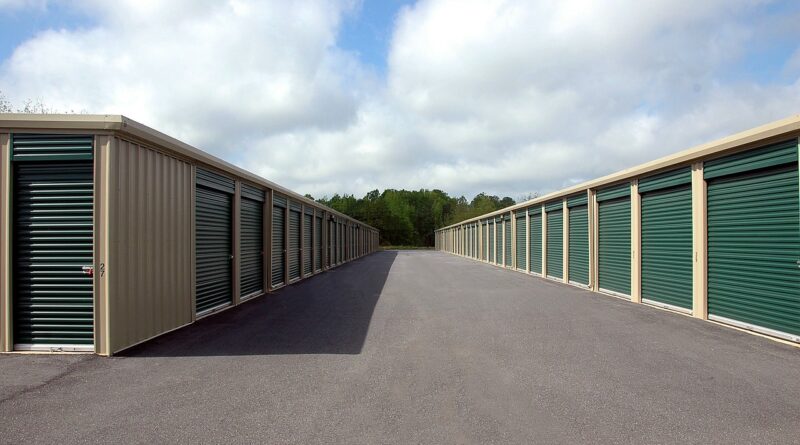7 Essential Items to Consider Storing in a Climate-Controlled Unit
People often need storage units during home renovations to safeguard their belongings from dust and damage. Additionally, when household space becomes limited, these units provide extra room for belongings.
They’re also a secure option to protect valuable or rarely used items from potential hazards. The role of climate control in storage units is crucial, especially in areas grappling with fluctuating weather conditions. Humidity, in particular, is a prominent concern.
Take, for instance, Louisiana, ranked as the third most humid state in the US, with an annual relative humidity of 74%. For the residents of this state, safeguarding their belongings against moisture is indispensable.
Choosing a climate-controlled storage unit becomes a necessity. But what items are so valuable or vulnerable that they warrant such protection? Let’s discuss the essential items best suited for climate-controlled storage.
Artwork and Collectibles
Artwork and collectibles, for many, are more than just possessions. They hold memories stories and can even be seen as investments for the future. While they are precious, they’re also vulnerable to their surroundings.
A simple rise or dip in temperature can be harmful. Paintings might begin to warp, while collectibles can lose their sheen or form. Now, imagine the risk in Lake Charles, LA, which is the most humid city in the US, with a staggering 90% relative humidity. Such levels can spell disaster for delicate items.
This is why residents of this region should seriously consider the benefits of Lake Charles storage units with climate control features. These units protect cherished items from the harshness of the environment.
Personal Documents and Photographs
Everyone has a stash of personal documents that they treasure. Be it the paperwork that marks significant life events or photographs capturing fleeting moments. The damage to these papers can be heart-wrenching.
Humidity is a silent enemy here. When these documents encounter moisture, they can lose their shape and color or even become a breeding ground for mold. This is particularly true for photographs. When photos face humidity, they often stick to one another, leading to irreversible damage.
That’s why it’s crucial to store these vital papers and cherished images in a climate-controlled unit.
Electronic Devices and Media
Most households today have a range of electronic devices, from computers to music and video media. These devices, though built for daily use, have parts that are sensitive to the environment. When there’s too much heat or cold, electronics can malfunction.
Even more, humidity is a big concern. When moisture finds its way into these devices, it can harm the internal circuits. For CDs and DVDs, the risk is also there. They can warp or become unreadable when exposed to unsuitable conditions.
Hence, it’s important to store these items in a place that’s stable in temperature and low in humidity. Climate-controlled units keep your devices and media in optimal conditions, ensuring they last longer without issues.
Wooden Furniture
Wooden furniture has its unique set of challenges when it comes to care. Temperature plays a big role in how wood reacts. If there’s too much moisture around, wood can change shape. It might bend, show cracks, or even decay from the inside.
On the other side, if the air is too dry, wood can lose its strength and become breakable. These changes are not just about looks; they can also weaken the furniture’s durability.
So, where should you keep your wooden furniture to avoid these problems? The answer is in a place where the environment is controlled.
Musical Instruments
Musical instruments need careful attention. The materials they’re made of, especially wood, react noticeably to the surrounding conditions. When there’s a lot of moisture in the air, these instruments can absorb it. This absorption can lead them to expand.
On the other hand, when the environment is too dry, they can contract. Such expansions and contractions are problematic. Not only do they affect how the instrument plays and sounds, but they can also reduce its lifespan.
Leather Goods and Clothing
Leather’s quality can diminish if not stored properly. In areas with high humidity, leather can attract mold or mildew, which not only spoils its appearance but can also weaken it over time.
Clothing, on the other hand, especially pieces made from delicate fabrics, faces its own set of challenges. Excessive moisture can harm the texture, color, and overall integrity of the fabric. This means that the favorite dress or shirt you own can look faded or feel different if not stored well.
So, the best place to store these is in a climate-controlled storage space where there’s no risk of moisture damage.
Wine Collections
For those passionate about wines, each bottle is a treasure that captures a particular taste and aroma. Yet, storing wine isn’t as simple as placing it on a shelf. The environment is crucial in how a wine ages and maintains its quality.
Humidity, for instance, is a factor that needs careful monitoring. If it’s too high, the labels on the bottles might come off, making it difficult to identify the wine later. On the other hand, if the air is too dry, the cork can become brittle, allowing unwanted air inside the bottle. This can change the wine’s taste and ruin its essence.
Conclusion
Protecting valuable items from environmental damage is crucial. Whether it’s personal documents, artwork, electronics, or wine, each requires special care. Humidity and temperature fluctuations can wreak havoc on them. Climate-controlled storage offers a solution. It provides a consistent environment, keeping belongings safe from harm.
Whether you’re in a humid region or facing extreme temperature changes, consider such storage. It’s an investment in preserving what matters most to you, ensuring longevity and maintaining quality. Always prioritize your items’ safety.




